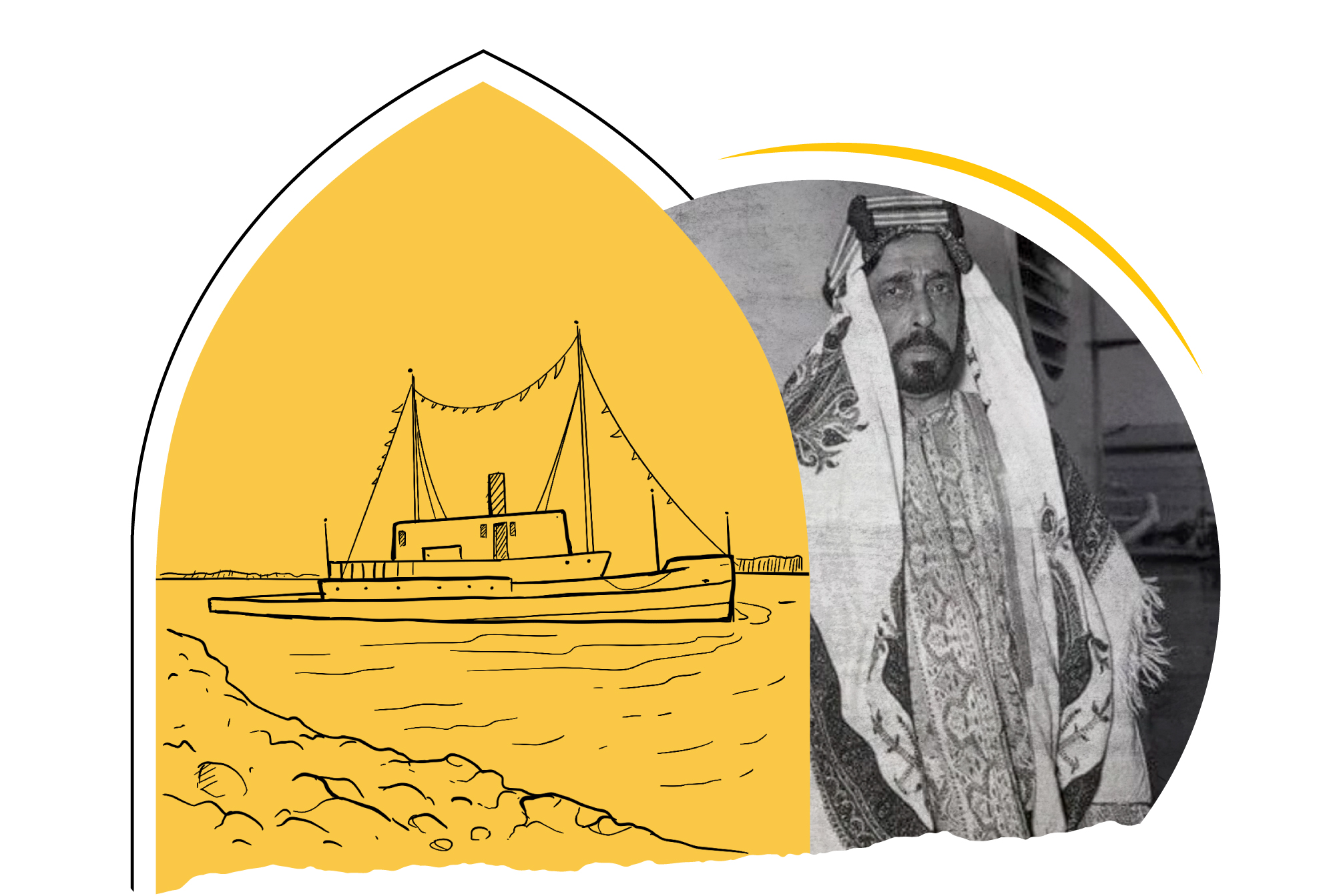
The British Facilitated Persian Occupation of Ahvaz
They Convinced Sheikh Khazal Al-Kaabi of the Deception Negotiations During Which he was Arrested in (1925)
When talking about our great Arab nation from the ocean to the Gulf, an important part of the land of our Arab nation stops us, which is Ahvaz, the vast Arab region that is regionally surrounded by Persia, Isfahan, Wasit and Basra, and includes plain lands between the heights of Lur Mountains in the east, the Arabian Gulf in the south and the outskirts of the Tigris River in the west. Ahvaz land area, that eastern and northern coasts of the Arabian Gulf, is approximately 324,000 square kilometers. Throughout its long history, Ahvaz passed through a number of Arab emirates in the eastern and northern coast regions of the Arabian Gulf, such as the Arab Musha’sha Emirate in the north and east of the Gulf. The Arab Emirate maintained its political independence for many centuries after a series of early and repeated Persian invasions.
Muhammarah emirate preserved its Arab identity for centuries before the Persian occupation, as three Arab families alternated in ruling it: Musha’sha, Al-Bou Nasser and Al-Bou-Kaseb from the well-known Bani Ka’b tribe in Ahvaz and the Arabian Peninsula. It moved in the region from Hawizeh city to Al-Dawraq city (currently Al-Falahiyya) to Muhammarah city, successively until the day of its occupation.
The Persians resorted to deception with Ahvaz, as is their habit when they failed militarily. Through agreement with the British, they resorted to deception through mediation between Arabs and Persians. British participation in the deception was when Sheikh Khazal Al-Kaabi was summoned to the deck of a British cruiser in Shatt Al-Arab near Muhammarah city, the capital, to dine and hold a ceremony to renew the signing of the Persian and British recognition of the independence of the Arab Emirate, after a long series of battles and repeated skirmishes between the armies of Iran and Muhammarah army, and to conclude a peace agreement between the warring parties. Sheikh Khazal was hesitant to go and doubted those deceitful intentions and smelled the scent of treachery and calamity. However, the representative of Shah Reza Khan and the British consul persuaded the Sheikh to come to the signing ceremony to end the conflict between both states. In fact, Britain paved the way for Reza Khan Pahlavi to set up a plot and deceive Sheikh Khazal and invited him on the back of a yacht floating on the waters of Shatt al-Arab, so that the Persians could capture the Arab prince and then occupy the region militarily on the night of the arrest on the 19th and 20th of April 1925.
Britain stepped aside after the arrival of Sheikh Khazal on the back of the cruiser and breached its pledges to the Arab Emir to protect the emirate, thus abandoned the role of mediation between Reza Khan and Sheikh Khazal. The Sheikh was arrested on the back of the cruiser by Iranian forces, after which Prince Al Kaabi took to the Iranian capital, Tehran, 1925 prisoners on 10 May. That movement was the actual beginning of the occupation of part of the Arab world, which prompted the servants of Sheikh Khazal to declare an armed revolution against the deceitful and cowardly usurper, which was known as “Thawrat Al-Ghelman”. Revolutions continued one after another against the occupier.
After Pahlavi regime faced the strong Ahvazi Arab resistance, it decided, on 1928, to disarm Ahvazi Arab people and start the Persianization policy. The first measures included changing and prohibiting Arab dress. Tehran demanded the heads of Arab clans to completely disarm and replace the Arab dress with Pahlavi garments. He also demanded them to remove their hands from all their properties and lands, so was the Hawizeh revolution in response to these unjust measures. It is worth noting that Hawizeh city is one of Ahvaz cities and is about 90 kilometers away from Muhammarah. In Hawizeh, the revolution was led by Sheikh Muhyiddin Al-Zibaq and several clans cooperated therewith. A government was formed in Hawizeh that lasted for six months, declaring separation from the Iranian occupation and continuing to exercise its rule independently. Despite the cruelty practiced by the Iranian occupation, Ahvazi people did not submit thereto, except for Britain’s cooperation with Iran in monitoring the activity of the Arab clans. The British intelligence worked favor of Pahlavi Iranian government. Six months later, the revolution was suppressed with ugliness, hatred and blood, where a large number of revolutionaries were arrested and some were executed. All Arab property was seized and terrorism, oppression, abuse, and persecution increased. Muhyiddin al-Zibaq, the leader of the revolution, was arrested and imprisoned in a private house until he died. After the end of Hawizeh revolution, the Iranian authorities continued to oppress, terrorize, abuse and imprison free people. Many Arabs were deported to northern Iran and the Persians settlers inhabited the Arab lands. Some Ahvazis fled to Iraq, Kuwait, and other Gulf countries.
British intelligence was a major assistant to Iran's control of Ahvaz and thwarting its revolutions.

Iran has harassed the Arabs in their sources of livelihood, cutting off water from their farms, seizing their lands and distributing them to the Persian immigrants, whom it settled in the colonies it established for them, provided them with all the means for their livelihood at the expense of the Arab Ahvazi people. This brutal oppression continues to this day.


- Ibrahim Al-Obeidi, Ahvaz… A Stolen Arab Land (Baghdad: Dar Al-Hurriya for Printing, 1980).
- Hassan Al-Jaff, Encyclopedia of Iran’s Political History (Beirut: Arab House Encyclopedias, 2008).
- Khaled Al-Masalmeh, Arab Ahvaz Occupied Territories, 2nd Edition (Germany: Center for German-Arab Studies, 2008).
- Salih al-Ali, Ahvaz in Early Islamic Eras (Baghdad: Elam Studies Center, n.d.).
- Ali Al-Helou, Ahvaz Tribes and Families (Najaf: Al-Ghari Modern Press, 1970).

